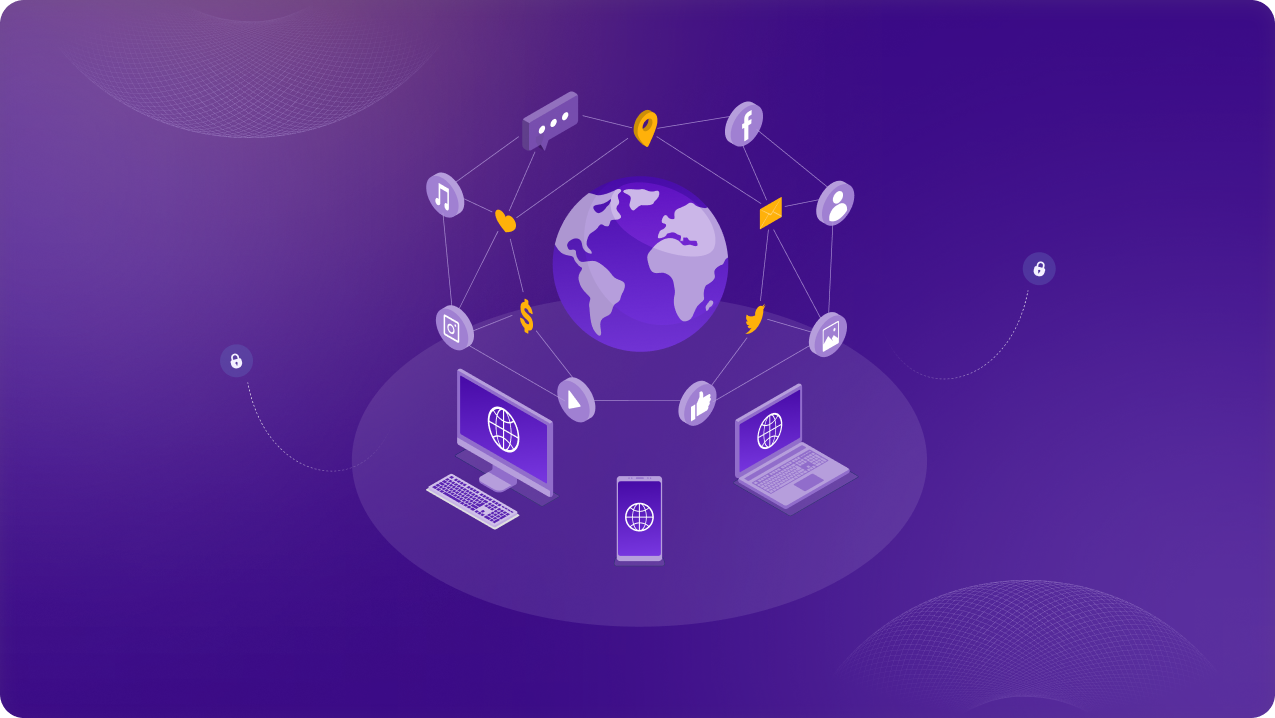Table of Contents
Did you know that multi-factor authentication (MFA) reportedly blocks 99% of automated cyberattacks? With cyberattacks increasing by 75% in 2024 compared to 2023, MFA has emerged as a critical defense mechanism, adding an extra layer of security to prevent unauthorized access.
In other words, implementing multi-factor authentication isn’t just a security enhancement – it’s a business imperative.
This guide will walk you through the essentials of MFA and how to implement it effectively for your organization.
What Is Multi-Factor Authentication?
Multi-factor authentication is a security framework that requires users to verify their identity using two or more independent factors. These factors typically fall into three categories:
- Something You Know: Passwords, PINs, or answers to security questions.
- Something You Have: A smartphone, hardware token, or smart card.
- Something You Are: Biometric data such as fingerprints, facial recognition, or voice patterns.
Unlike single-factor authentication, MFA significantly reduces the risk of breaches by ensuring that access cannot be gained through stolen credentials alone.
How Does Multi-Factor Authentication Work?
MFA strengthens access control by combining multiple layers of verification, ensuring the identity of users is authenticated before granting access. Here’s a breakdown of how a typical MFA process works:
Step 1 – Login Attempt: The user enters their username and password to initiate the login process.
Step 2 – Verification Request: The system prompts the user for an additional authentication factor. This could be a one-time password (OTP) sent to their mobile device, a fingerprint scan, or a push notification.
Step 3 – Authentication Confirmation: The user provides the second factor, and if it matches, access is granted.
Modern MFA solutions are highly versatile and integrate seamlessly with enterprise applications, offering a range of verification methods such as:
- Push notifications via authenticator apps like Microsoft Authenticator, Google Authenticator, or specialized enterprise solutions.
- SMS or email-based OTPs for users who don’t want to rely on dedicated apps.
- Biometric authentication using device hardware like fingerprint scanners or facial recognition systems.
The implementation of these solutions can be customized to meet the specific needs and security posture of your organization.
Why Should Your Business Use Multi-Factor Authentication?
MFA is no longer optional in today’s cybersecurity landscape. Here’s why it’s essential:
1. Mitigates Credential Theft
The 2024 Verizon Data Breach Report revealed that stolen credentials are the top cause of data breaches. MFA introduces additional verification methods that drastically reduce the chances of unauthorized access, even if a password is stolen or leaked.
2. Compliance with Regulations
Many data protection regulations and frameworks – such as the General Data Protection Regulation (GDPR), Health Insurance Portability and Accountability Act (HIPAA), and Payment Card Industry Data Security Standard (PCI DSS) – mandate the use of MFA to secure sensitive information. Non-compliance can result in significant fines, legal consequences, and damage to your organization’s reputation.
3. Reduces Phishing Risks
Multi-factor authentication offers a strong defense against phishing attacks. Even if attackers successfully steal login credentials, MFA ensures that unauthorized access cannot be gained without the second layer of verification, significantly minimizing the risk of phishing-related breaches.
4. Enhances Remote Security
With hybrid and remote work models becoming the norm, ensuring secure access for employees working from various locations is critical. MFA provides a scalable and efficient method for securing remote access, particularly for organizations with a decentralized workforce.
How to Deploy Multi-Factor Authentication in Your Company
While implementing MFA might seem daunting, it can be done efficiently with proper planning. Follow these detailed steps to integrate MFA across your organization:
Step 1: Assess Your Needs and Risks
Begin by identifying systems, applications, and user groups that require higher levels of security due to the sensitivity of the data they handle. You should also evaluate your current authentication mechanisms, assess potential risks, and determine compliance requirements specific to your industry.
Step 2: Select the Right MFA Solution
Choosing the right MFA solution is crucial for both security and user experience. Look for solutions that are scalable, easy to integrate with your existing infrastructure, and flexible enough to meet the needs of different user groups. Some options include:
- Multi-factor authentication apps like Duo Security or Authy, which offer a balance of security and usability.
- Hardware tokens such as YubiKey, which provide a physical device for authentication.
- Biometric systems leveraging fingerprint or facial recognition, ensuring seamless and secure user authentication.
Step 3: Develop a Rollout Plan
Start small with a pilot program for high-priority systems or specific teams to test the MFA solution’s effectiveness. Gradually expand MFA across all users and systems once any issues are addressed. Clear communication is essential to encourage user adoption – don’t forget to emphasize the enhanced security MFA offers.
Step 4: Ensure Compatibility and Integration
It’s essential to test the chosen MFA solution for compatibility with your existing identity and access management (IAM) systems. Integration with single sign-on (SSO) solutions can provide a streamlined experience for users by consolidating authentication across multiple applications.
To further strengthen your business’s online security, combine MFA with PureVPN for Teams to ensure that all connections are authenticated and secure, protecting your sensitive data as it traverses potentially unsecured networks. PureVPN for Teams is a centralized business VPN solution that provides a user-friendly admin panel to manage up to 200 members and provision security features with ease.
Step 5: Provide Training and Support
Proper training is crucial to ensure smooth adoption and usage of MFA. Offer comprehensive resources to help employees understand the MFA process and troubleshoot common issues. This also helps minimize resistance and improve user compliance.
Step 6: Monitor and Optimize
Once MFA is implemented, regularly monitor authentication logs for suspicious activity. Continually refine your approach based on real-time data and stay abreast of new MFA technologies and evolving threats to maintain a secure environment.
Common Challenges in MFA Implementation (and How to Overcome Them)
While MFA is essential, there are a few challenges IT managers may face during implementation. Here’s how to address them:
1. User Resistance
Employees may perceive MFA as an inconvenience, especially if they are unfamiliar with the process. Combat this by choosing user-friendly solutions, such as push notifications that simplify the authentication process. Moreover, educate employees on the security benefits and reinforce how MFA helps protect company assets and their personal data.
2. Integration Issues
Integrating MFA with existing systems can sometimes lead to compatibility issues. To mitigate this, thoroughly test the MFA solution in a controlled environment before deployment. Ensure that vendors provide the necessary support to integrate MFA seamlessly with your current infrastructure.
3. Cost Concerns
MFA solutions can be expensive, particularly for small to medium-sized organizations. Optimize costs by initially rolling out MFA to high-risk systems and critical applications. Consider open-source or budget-friendly MFA solutions that still provide robust security without the high price tag.
In addition to the MFA solution, PureVPN for Teams offers an affordable way to improve your security posture, providing end-to-end encryption and secure access for remote teams. It also offers Dedicated IPs from 30+ global locations as well as Team Servers, which enable as many as 50 people to share one IP address regardless of their location.
Final Thoughts
Multi-factor authentication is a vital component of any comprehensive cybersecurity strategy. By implementing MFA, you can safeguard your organization against credential theft, phishing attacks, and unauthorized access. While the process of deploying MFA requires careful planning, the benefits far outweigh the effort.
When combined with a secure, centralized solution like PureVPN for Teams, MFA becomes even more powerful, ensuring that your data is protected both at rest and in transit. For businesses, the choice is clear: MFA is not just a compliance requirement; it is a critical security measure that will protect your organization in an increasingly hostile digital landscape.
By adopting MFA and leveraging PureVPN for Teams, you are ensuring a safer and more secure future for your business and your users.





